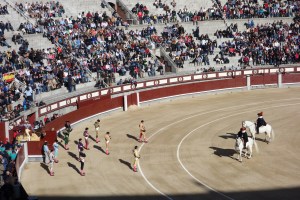This May I organized and participated in the biggest event in any fourth grader’s life at my school. Our annual three day, two night trip to the Coloma Outdoor Discovery School (CODS). My school has been part of this program for 23 years and CODS had just celebrated it’s 25th anniversary.
Coloma is the site of the event that changed California’s and the Nation’s history. In January of 1848, a carpenter from New Jersey, named James Marshall, spotted something shining in the tailrace of the sawmill where he served as construction superintendent. This was the “discovery” of gold that led to the Gold Rush of 1849, which is cited as the largest mass human migration in human history. California would never be the same. Just like my Greenhorns would be forever altered in their three day journey from being a Greenhorn to becoming an experienced Sourdough miner.
The CODS campus lies on the banks of the South Fork of the American River, just upstream from the site where the carpenter’s eyes fell on the shining beacon of gold. We are literally living in history, in a location that was ground zero for the enormous flood of emmigrants and immigrants that transformed the Golden State.
Each morning I would head out of my digs with my journal and paints. In the early morning, nature returns to the campus. The first harbinger of the dawn is the California towhee, with it’s emphatic “cheep” call. It is soon followed by the contact call of the California quail, then the harsh reprise of the western scrub-jay (Aphelocoma californica). Coloma is a place of truly California birds. When I stepped out of my door a covey of quail was to my left and six black-tail deer was to my right. The space in-between was populated with Canada geese and their downey goselings. The “wake-waka-waka” call of the acorn woodpecker was coming from the trees above.
I turned left, the quail scuttled off to the brush and I headed downstream with no destination but an urge to capture my experience in ink and watercolor. To my right was the American River, the river that Sam Brannan emoralized on May 12, 1848, when he held aloft a bottle of gold dust and announced to the crowded San Francisco street, “Gold! Gold! Gold from the American River!”
I headed out to the very edge of campus, just shy of Troublemaker Rapids. I saw a pieced of exposed granite surrounded by grass. I had not seen his rock before. Two mortar holes were worn into the granite. These holes were created and used by the native people of Coloma Valley to pound acorns into meal.
Acorns were a valuable food resource to native Californians providing protein and carbohydrates as well as a source of vitamins A and C. The grinding rock was silent now. The ancient grinding songs are gone but the sound of the swollen river working its way through Troublemaker Rapids and the calls of acorn woodpecker and scrub-jay, the other inhabitants of Coloma Valley that use acorns for sustenance, remain.
I set down my paints and journal and walked to the banks of the American and filled my cup with the icy snowmelt. I returned to the grinding rock and I started my sketch.

Sketching the grinding rock on the CODS campus with the waters of the South Fork of the American River.

My second sketch was found much closer to my digs, across the dirt road in fact. Like the thousands that rushed into Coloma Valley in 1848 and 1849 this was an invasive species. It is known by many derivative monikers. My favorites are “stink tree”, “ghetto palm”, and “tree of Hell”. It is known to science as Ailanthus altissima, and it’s common name is tree of heaven. It’s native home is the celestial kingdom: China.
The tree was brought to California in the 1890’s by Chinese immigrants, who sought their fortune in the gold fields. It is commonly found in abandoned Chinese mining camps.
What really interested me was the two active cavity nests that were in the upper reaches of the truck. The bottom cavity was being used by a pair of European starling. Each time the adults returned with food, the begging calls of the chicks could be heard from the front porch of my digs. The upper hole was occupied by acorn woodpeckers.
For me this tree and it’s tenants are a metaphor for Coloma and California since the time of the Gold Rush of 1849. Here was a tree from Asia being occupied by an evasive species of bird, the European starling that has spread in it’s own Manifest Destiny, from coast to coast and north and south. Just when these thoughts get me down, the Acorn woodpecker returns to her nest with a beak full of insects for her hungry chicks. This is the true native Californian, occupying the upper nest cavity. Her brood will ensure that the laughter-like waka-waka-waka call of the bird that the miners call carpentero, will always fill the Coloma Valley.




 Corvidsketcher, sketching the Plaza de Toros La Piedad in Trijillo, with lesser kestrels flying above.
Corvidsketcher, sketching the Plaza de Toros La Piedad in Trijillo, with lesser kestrels flying above.

